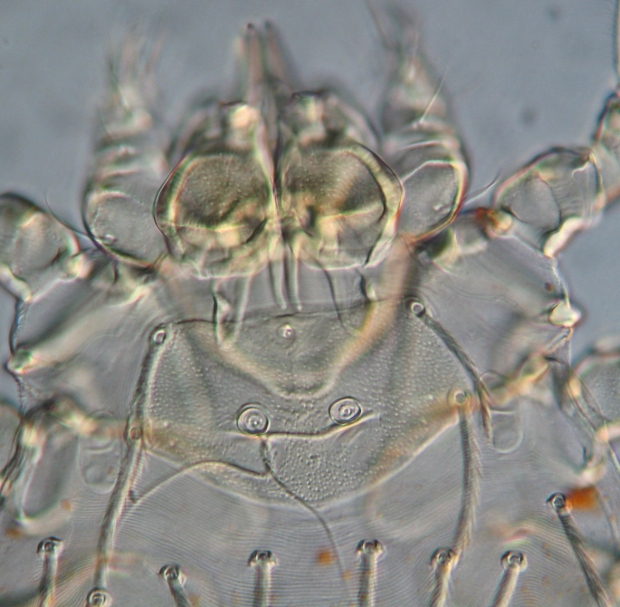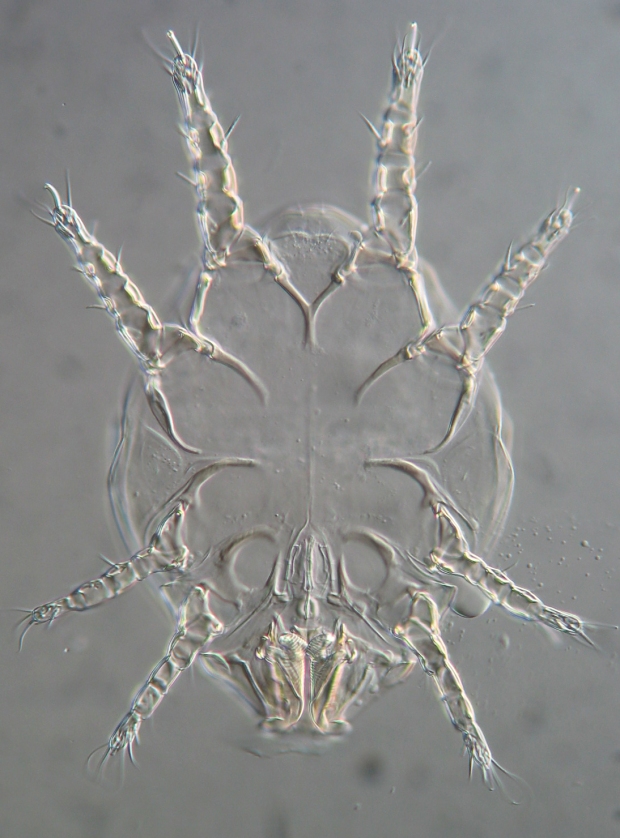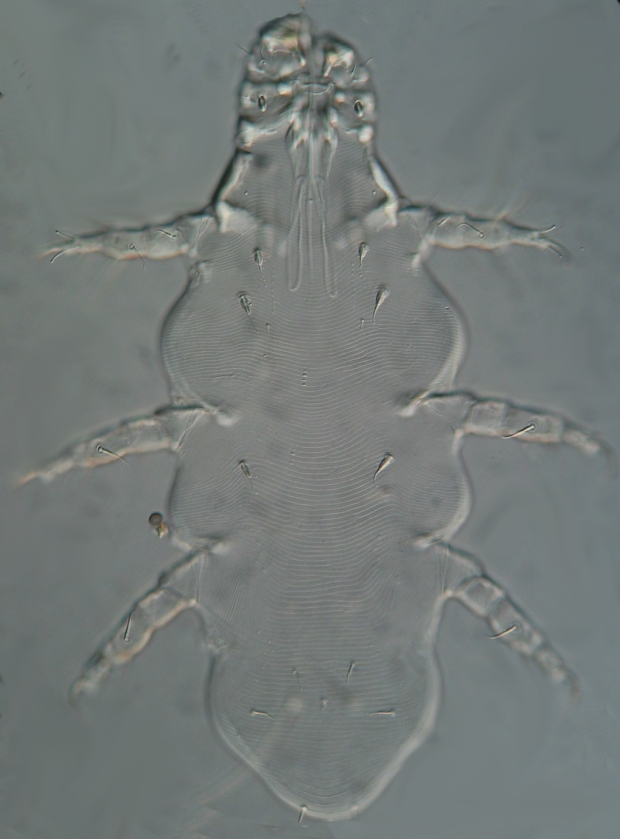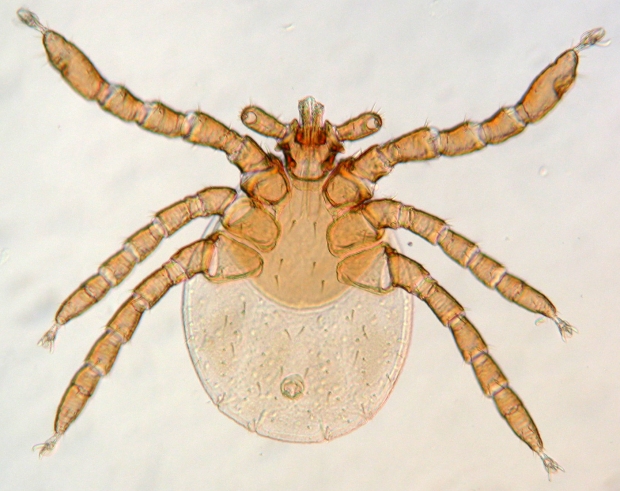A few years ago I worked with members of the Vancouver Rat Project to investigate the cause of lumpy ears in rats from one of the shipping ports in that city. The rodents turned out to have ear mange caused by the sarcoptid mite Notoedris muris (Astigmata: Sarcopidae). As far as we could tell, this was the first record of N. muris in Canada. About two weeks ago, one of the co-authors of this paper, Jamie Rothenburger (now a Doctor of Veterinary Medicine doing her Ph.D. at the University of Guelph in Ontario), emailed to ask if I could look at a chunk of skin taken from a mangy squirrel. Jamie suspected Notoedres centrifera Jansen. This sarcoptid species has been reported to cause mange in many species of sciurids in North America and may be hindering recovery of the western gray squirrel.

Diagnosis and drawings of Notoedres centrifera from Klompen (1992).
Jamie had only histological sections through mangy squirrel skin, though, which are difficult to match to species descriptions. I said sure and soon received a small frozen chunk of integument via courier. The skin sat in a saturated KOH solution for a couple of days to encourage its dissolution. The single mite I managed to find in the smelly skin slurry matched Klompen’s illustrations of N. centrifera (above), and was a similar size (200 um).

Ventral view of the sarcoptid mite I found in the squirrel slurry.

Dorsal view of same.
So, diagnosis confirmed, end of story, right? Well, actually, the mite isn’t the reason for the ‘mystery’ in the title of this post. In addition to the one tiny Notoedres, I found several almost as miniscule (600 um), translucent cigar-shaped objects in the digested squirrel skin. Out of curiosity, I mounted three of them yesterday. [UPDATE: I revisited the slurry and found a fourth critter, images of which are at the bottom of the post]. Today I spent several hours futilely trying to pin them down to a taxon finer than ‘probably some sort of arthropod’. My first thought as I mounted them was follicle mites (Demodicidae) in cysts, but nope, not enough legs. There seem to be only two pairs! Plus they end in single large claws or clawlike tarsi, whereas follicle mites have two small claws per leg. Embryonic insects in eggshells? Still not enough legs, unless the first pair develop much more slowly than the last ones. Maybe…see third photo below. What insects might be on squirrels? The critters don’t look much like lice, because to my knowledge no lice have a big tuft of bum setae. And what are those weird flash-shaped setae at the head end? Are those round things spiracles? And why is there scalloped ornamentation on the bases of the four well-developed legs? None of the many entomology texts I consulted had images at all similar to these.

Ventral view of one of the four-legged embryos (?) from the squirrel skin. Note the long whippy bum setae (I assume that’s the bum end).

Lateral view of one of the other embryos.

It looks like there might be another pair of very poorly sclerotized anterior legs, with the faint leg tips clasping on of the more posterior legs.

Flask shaped setae on the head-ish end.

Something that might be an anterior spiracle.

A row of abdominal spiracles?
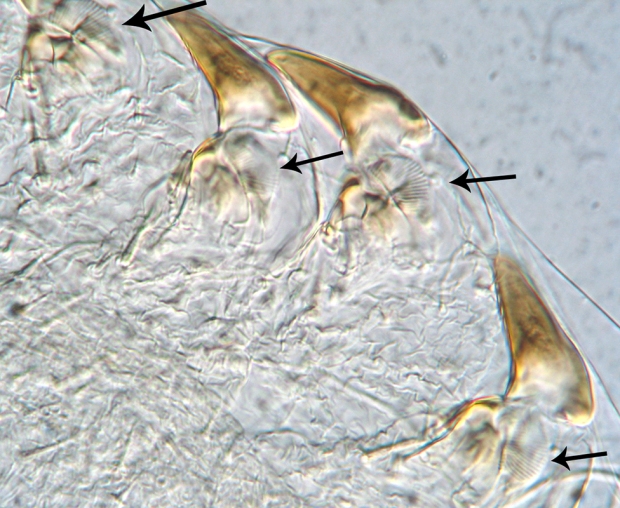
There’s a fan-shaped structure at the base of each of the sclerotized legs (most clear on second leg from the right). They remind me of the ventromental plates of chironomid larvae.

I managed to mount one of the mystery critters with legs spread out and saw that the fan is actually split, like an open bivalve shell. Note also the trachea.

At the anterior end of the thing are two sets of what look like trichobothrial bases, but there are no trichobothria or other setae coming out of them on any of the four critters that I mounted.
I am thoroughly stumped. Help!
Reference:
Klompen J.S.H. 1992. Phylogenetic Relationships in the Mite Family Sarcoptidae (Acari: Astigmata). Museum of Zoology. Ph.D. thesis, The University of Michigan, Ann Arbor, MI, USA.
